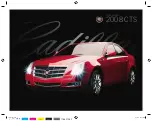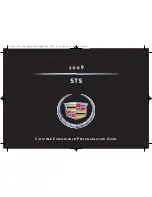
2000 Volvo S & V70
The tires have good road holding characteristics and offer good handling on dry and wet surfaces. It
should be noted however that the tires have been developed to give these features on snow/icefree
surfaces. Certain models are equipped with "all-season" tires, which provide a somewhat higher
degree of road holding on slippery surfaces than tires without the "all-season" rating. However,
for optimum road holding on icy or snow covered roads we recommend suitable winter tires on all
four wheels. When replacing tires, be sure that the new tires are the same size designation, type (radial)
and preferably from the same manufacturer, on all four wheels. Otherwise there is a risk of altering the
car's roadholding and handling characteristics.
NOTE: When storing wheel/tire assemblies (e.g. winter tires and wheels), either stand the assemblies
upright, or suspend them off the ground. Laying wheel/tire assemblies on their sides for prolonged
periods can cause wheel and/or tire damage.
Wear indicator
The tires have a socalled "wear indicator" in the form of a number of narrow strips running across or
parallel to the tread. When approx. 1/16" (1.6 mm) is left on the tread, these strips become visible and
indicate that the tire should be replaced.
Tires with less than 1/16" (1.6 mm) tread have a very poor grip in rain or snow.
When replacing worn tires, it is recommended that the tire be identical in type (radial) and size as the
one being replaced. Using a tire of the same make (manufacturer) will prevent alteration of the driving
characteristics of the vehicle.
To improve tire economy:
· Maintain correct tire pressure. See the tire pressure label on the inside of the fuel tank cover.
· Drive smoothly: avoid fast starts, hard braking and tire screeching.
· Tire wear increases with speed.
· Correct front wheel alignment is very important.
· Unbalanced wheels impair tire economy and driving comfort.
· If the wheels are rotated, they should be kept on the same side of the car so that they revolve in the
same direction as prior to rotation.
· Hitting curbs or potholes can damage the tires and/or wheels permanently.
Flat spots
All tires become warm during use. After cooling, when the vehicle is parked, the tires have a tendency to
distort slightly, forming flat spots. These flat spots can cause vibrations similar to the vibrations caused
by unbalanced wheels. They do, however, disappear when the tire warms up. The degree to which flat
spots form depends on the type of cord used in the tire. Remember that, in cold weather, it takes longer
file:///K|/ownersdocs/2000/2000_SV70/00sv70_05.htm (2 of 6)12/30/2006 3:43:45 PM
Содержание Early design 2000 S70
Страница 110: ...2000 Volvo S V70 Contents Top of Page file K ownersdocs 2000 2000_SV70 00sv70_04a htm 8 of 8 12 30 2006 3 43 42 PM ...
Страница 123: ...2000 Volvo S V70 Contents Top of Page file K ownersdocs 2000 2000_SV70 00sv70_04b htm 13 of 13 12 30 2006 3 43 43 PM ...
Страница 265: ...2000 Volvo S V70 Contents Top of Page file K ownersdocs 2000 2000_SV70 00sv70_10d htm 6 of 6 12 30 2006 3 43 56 PM ...
Страница 270: ...2000 Volvo S V70 Contents Top of Page file K ownersdocs 2000 2000_SV70 00sv70_11 htm 5 of 5 12 30 2006 3 43 56 PM ...
















































